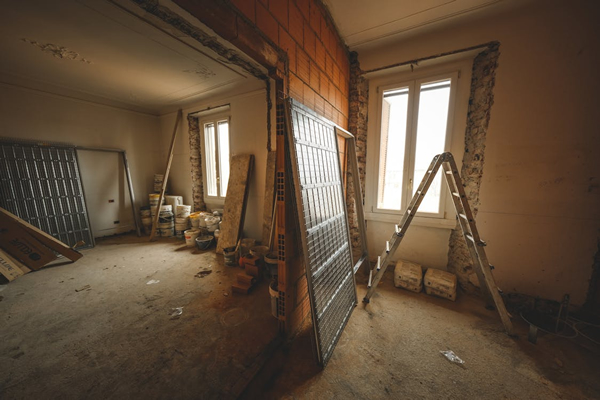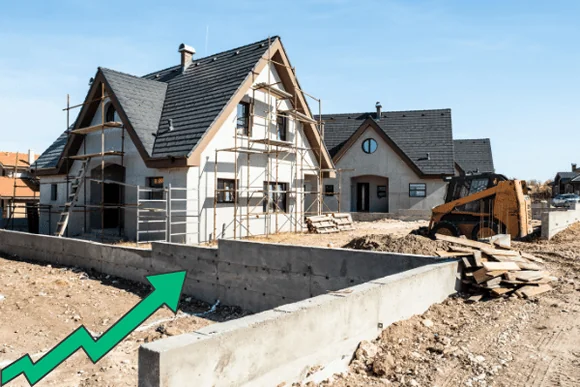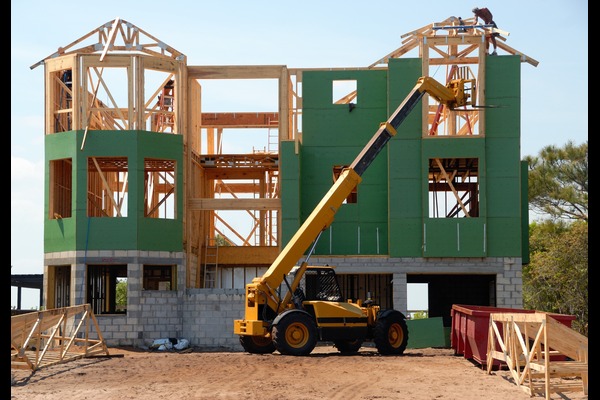Refurbishment Finance for Historic Properties: Preserving Heritage with Funding
Historic properties hold a unique charm, offering glimpses into the past and preserving architectural treasures for future generations. However, restoring and refurbishing these properties often comes with significant financial challenges. From structural repairs to conservation efforts, the costs associated with refurbishing historic buildings can be substantial. Fortunately, refurbishment finance, including bridging loans, provides a viable solution for property owners looking to preserve heritage while navigating the complexities of funding.
Preserving heritage through refurbishment finance
Historic properties play a crucial role in maintaining cultural heritage and architectural diversity. Whether it’s a centuries-old castle, a Victorian-era mansion, or a quaint cottage with historical significance, these properties contribute to the fabric of our communities. However, the upkeep and restoration of such properties require careful attention and substantial investment.
Refurbishment finance serves as a lifeline for property owners seeking to undertake restoration projects. These financing options offer flexibility and tailored solutions to address the unique needs of historic property refurbishments. Bridging loans, in particular, play a pivotal role in providing short-term funding to cover the initial costs of refurbishment while longer-term financing is arranged.
Bridging loans: A key component of refurbishment finance
Bridging loans are well-suited for historic property refurbishments due to their speed and flexibility. These short-term loans can be secured quickly, allowing property owners to commence refurbishment work without delay. Whether it’s repairing structural damage, restoring period features, or enhancing energy efficiency, bridging loans provide the necessary funds to kick-start renovation projects.
One of the advantages of bridging loans is their versatility. They can be used to finance various aspects of refurbishment, including purchasing the property, covering renovation costs, or bridging the gap between selling an existing property and acquiring a historic one. This flexibility enables property owners to adapt to evolving project requirements and unforeseen challenges that may arise during the refurbishment process.
Moreover, bridging loans are typically secured against the property itself, providing lenders with added assurance and enabling borrowers to access higher loan amounts based on the property’s value. This makes bridging loans an attractive option for financing refurbishment projects, especially for owners of historic properties with significant equity.
Navigating the refurbishment process
While refurbishment finance, including bridging loans, provides an essential financial tool for preserving historic properties, navigating the refurbishment process requires careful planning and consideration. Property owners should conduct thorough assessments of the property’s condition, obtain necessary permits and approvals from local authorities, and engage qualified professionals with experience in historic preservation.
Additionally, it’s essential to develop a detailed budget and timeline for the refurbishment project, taking into account potential contingencies and unforeseen expenses. By working closely with lenders, contractors, and preservation experts, property owners can ensure that their refurbishment endeavours are executed smoothly and in accordance with preservation standards.
Conclusion:
Refurbishing historic properties is not only a labour of love but also a commitment to preserving cultural heritage for future generations. With refurbishment finance, including bridging loans, property owners can embark on restoration projects with confidence, knowing that they have the necessary funding to safeguard our architectural treasures.
By leveraging the flexibility and speed of bridging loans, property owners can breathe new life into historic properties, revitalising communities and honouring the legacy of the past. As stewards of our built heritage, let us embrace the opportunity to preserve and cherish historic properties, ensuring that their beauty and significance endure for generations to come.
The First-Time Home Developer’s Guide to Residential Development Finance
Embarking on your journey as a first-time home developer is an exciting endeavour, but navigating the complex landscape of residential development finance can be a daunting task. In this guide, we’ll walk you through the essential steps and insights to help you understand and secure the right financing for your project. Leveraging valuable information from BridgingLoans.co.uk, let’s explore the key elements that every first-time home developer should consider.
Understanding the basics
Residential development finance encompasses various financing options tailored to the unique needs of home developers. As highlighted by BridgingLoans.co.uk, these options include traditional mortgages, bridging loans, and development finance loans. Each serves a specific purpose, and understanding their nuances is crucial to making informed decisions.
Types of development finance
BridgingLoans.co.uk outlines different types of development finance that first-time developers can explore:
- Commercial Development Finance: Aimed at financing projects with a commercial focus, such as retail or office space.
- Residential Development Finance: Specifically designed for housing projects, whether single-family homes or larger residential complexes.
- Bridging Loans: Offering short-term financing solutions to bridge financial gaps during the development process.
Loan-to-value (LTV) ratios
Loan-to-value ratios play a significant role in determining the amount of financing you can secure. BridgingLoans.co.uk advises that LTV ratios are typically calculated based on the gross development value (GDV) of the project. Understanding this ratio helps you gauge the level of financial support you can expect from lenders.
Application process
BridgingLoans.co.uk emphasises the importance of a well-prepared application when seeking residential development finance. Lenders will scrutinise your project plans, financial projections, and your own experience and track record. Be ready to showcase a comprehensive and realistic overview of your development.
Budgeting for costs
From land acquisition to construction and beyond, budgeting is a critical aspect of residential development, this can be done using a development finance calculator. BridgingLoans.co.uk recommends accounting for all costs, including legal fees, planning permissions, and unexpected expenses. Having a detailed and accurate budget is crucial to securing the right level of financing.
Risk mitigation
Every development project carries inherent risks, and first-time home developers must be aware of potential challenges. BridgingLoans.co.uk suggests incorporating risk mitigation strategies into your project plan, demonstrating to lenders that you have considered potential obstacles and have a plan in place.
In conclusion
Embarking on your journey as a first-time home developer is a thrilling adventure, and understanding residential development finance is key to turning your vision into reality. By leveraging the insights provided by BridgingLoans.co.uk, you can navigate the intricacies of development finance, choose the right financing option for your project, and embark on a successful journey towards creating your dream residential development. Remember, thorough research, careful planning, and informed decision-making are your allies in this exciting venture.
How is Development Finance Calculated?
Embarking on a development project requires meticulous planning, and at the heart of this planning is understanding how development finance is calculated. Developers, investors, and stakeholders in the UK’s real estate sector need a comprehensive grasp of the financial intricacies involved in obtaining development finance. In this blog post, we’ll demystify the calculation process.
Loan-to-value (LTV) ratio
A fundamental component in calculating development finance is the loan-to-value (LTV) ratio. LTV is a percentage that represents the loan amount in relation to the project’s total value. In the UK, lenders typically offer a percentage of the gross development value (GDV), or the end value of the completed project. Lenders may vary in their LTV ratios, but we suggest that LTVs can range from 50% to 70%, depending on factors such as the project’s scale, location, and risk assessment.
Gross development value (GDV)
The gross development value is a critical factor in determining the overall value of the completed project. Developers calculate the GDV by assessing the anticipated market value of the developed property. The GDV influences the loan amount a developer can secure, with lenders often offering a percentage of this value. Accurate GDV projections are essential for a realistic evaluation of the project’s financial viability.
Interest rates
Interest rates play a pivotal role in development finance calculations. Lenders charge interest on the funds provided, and the rates can vary based on market conditions, the lender’s policies, and the perceived risk of the project. We highlight the importance of understanding the interest rates, which can be fixed or variable, and factoring them into the overall cost of finance.
Loan duration
The duration of the loan, also known as the loan term, is a key element in the calculation process. Lenders in the UK may offer short-term loans for development projects, and the loan duration can range from several months to a few years. Developers must consider the time needed for project completion and ensure that the loan term aligns with the project timeline.
Fees and charges
Development finance comes with associated fees and charges that contribute to the overall cost. These may include arrangement fees, exit fees, and surveyor fees, among others. It’s crucial for developers to carefully review and factor in these costs when calculating the total expense of obtaining and repaying the development finance.
In the realm of real estate development, understanding how development finance is calculated is paramount to successful project execution. As demonstrated by our insights, considerations such as the loan-to-value ratio, gross development value, interest rates, loan duration, and associated fees all contribute to the intricate equation of development finance. Armed with this knowledge, developers can navigate the financial landscape with confidence, making informed decisions that pave the way for successful and sustainable projects.
How Much Does Development Finance Cost (and How is the Interest Paid)?
Development finance is a little more complex than a conventional mortgage, with funds that are issued in a series of stages. The lender appoints a surveyor to monitor the progress of the project, tying each loan instalment to the completion of key project phases.
First-charge (aka senior) development finance can be used to cover up to 85% of a project’s total costs. The rest can be covered with a second- or third-charge (mezzanine) product, enabling investors to cover up to 100% of a project’s costs with development finance.
Interest on a development finance loan accrues monthly, often at a rate of around 0.5% or less. But what are the total borrowing costs payable on development finance, and how are interest payments made?
How much does development finance cost?
Various factors influence the costs of development finance loans, including but not limited to the following:
- The track record and CV of the applicant.
- The nature and extent of the planned project.
- The location and value of the development.
- The sum of the loan required and its LTV.
- The projected final value of the development.
- The length of the loan repayment term.
As a general rule of thumb, development finance loans of £500,000 or more will typically have an interest rate of around 4% to 9% per year. Loans with a value of less than £500,000 are more likely to be charged at 9% to 12% per year.
However, interest rates are always negotiable, based on the factors above.
Additional borrowing costs incurred as part of a typical development finance product include the following:
- Lender arrangement fee: normally around 1-2% of the loan amount
- Lender exit fee: not always payable, but can be up to 1-2% of the loan amount.
- Valuation and monitoring of surveyor fees are variable by way of provider.
- Broker fees: brokers collect their commissions from the loan issuer and offer their services free of charge to the applicant.
Across the board, all borrowing costs can be minimised by enlisting the support of an experienced broker at an early stage.
How is the interest on a development finance loan paid?
Most development finance specialists are fairly flexible when it comes to interest payments.
There will usually be the option of repaying the interest on a monthly basis, leaving just the initial loan balance to repay when the facility matures. However, property developers often prefer the ‘rolled up’ interest option, where all interest owed is added to the final loan balance.
With the latter option, no monthly repayments at all need to be made during the life of the loan. This often suits the requirements and priorities of property developers looking to keep their own capital as liquid as possible.
Either way, prompt repayment holds the key to minimising the costs of development finance. Early repayment may be an option, but depending on the lender’s policies, it may result in early exit fees becoming payable.
Renovations Set to Get More Expensive as Building Material Costs Skyrocket
Property renovation and repair bills are expected to climb significantly over the coming months as builders warn of a major shortfall in the availability of even the most basic supplies. As a side effect of the UK’s booming housing market, builders are struggling to get hold of everything from roof tiles to timber to bags of concrete.
Many have likened it to entering a supermarket to find empty shelves, with the availability of building essentials having totally dried up in some regions. Rather than relying on a stockpile of products to allow projects to be completed, builders are increasingly buying what they need at the last minute, if and when the products they need are available.
As a result, there has already been an increase of around 10% in the costs of building materials, though those in shorter supply are becoming even more expensive. This means that homeowners considering property improvements or urgent repairs over the coming months can expect significantly higher costs as contractors look to augment the prices of building materials.
Seven months of price increases
Timber and steel prices in particular have reached highs not seen for some time, with the IHS Markit/CIPS UK survey having indicated no less than seven consecutive months of price increases to date.
According to Noble Francis, economics director at the Construction Products Association, steel and copper prices have increased by up to 40% over the past six months, while the average price for timber has increased by as much as 80% in some regions.
Even the most basic supplies like varnishes and paints are up to 30% more expensive than they were when compared to the previous year, while the price of polypropylene is up by 60%.
As the vast majority of all building materials used in the construction sector are produced domestically, manufacturers and suppliers have limited on-hand inventory to fall back on.
“You can’t point the finger at anybody because so many different materials have availability issues right now. People who have been in this industry for over 30 years say they’ve never seen anything like it,” commented John Newcomb, the chief executive of the Builders Merchants Federation (BMF).
Another COVID-19 casualty
Many builders and contractors are now facing the prospect of heavy delays in project completion times, with lead times for concrete having increased to as much as three months. Roofers in particular are expected to struggle for the foreseeable future, with raw material costs having increased by around 50% to date.
The issue has been caused by a variety of contributory factors, though it has been greatly exacerbated by the temporary closures of many factories, mills, and production facilities and throughout three consecutive lockdowns. While the government showed lenience with regard to requirements for the construction sector to cease operations, producers are still struggling to catch up with pent-up demand for materials and supplies.
“We’re fighting hand-to-mouth to make sure materials are getting through. It’s just that people have to wait longer, and, of course, raw material prices are going up, so they are having to pay more,” said Newcomb.
“The jobbing builder has traditionally gone into a merchant and said I want three of this and six of that; those days are gone.”
“The key thing is not to go in expecting you can turn up at the door and just take those materials away, because that is not going to happen.”
Top 10 Issues with Planning Permission Applications
For homeowners and professional developers alike, planning permission issues are anything but uncommon.
Where issues with planning permission stand between you and the successful completion of an important project, the frustration can be unbearable. Particularly in instances where planning permission is rejected on the grounds of a simple oversight or application error.
So to help future candidates with their applications, here’s a quick rundown of the 10 most common mistakes and general issues with planning permission applications:
- Justifying your project on someone else’s: Just because someone else in the vicinity has been permitted to do whatever it is you intend to do doesn’t immediately validate your application. All decisions are considered by way of individual merit, and the goalposts are being moved all the time. Hence, making too many comparisons or references to someone else’s project really isn’t the way to go.
- Submitting too much information: Leaving out important details is never advisable, but there’s also such a thing as including too much information. Applications must be complete, but they should also be as concise and digestible as possible.
- Designing before buying a plot: Planning permission applications are considered by way of the prospective project’s potential to complement its surroundings and neighbouring buildings. As a result, it’s risky to go ahead and start designing a property or building before you’ve found the perfect place for it.
- Over-egging eco claims: Environmentally friendly projects are far more likely to be given the go-ahead than their polluting counterparts. Nevertheless, if you base your application heavily on eco claims, you can expect your application to be scrutinised even more aggressively than normal.
- Altering your design after commencement: When the project is underway, you may change your mind about various aspects of the final build. Unfortunately, anything that deviates from the precise plan you submitted could result in the planning permission being withdrawn.
- Overlooking local politics: Your project may not break any formal rules, but sizeable opposition from local residents could scupper your plans. If possible, it’s a good idea to get as many people on your side as possible prior to submitting your application.
- Expecting an easy ride: Your planning permission application process may be smooth and simple, but it could also be an unmitigated nightmare. Expecting an easy ride is a recipe for disaster; it’s far better to plan for every eventuality and be ready to plead your case in minute detail.
- Entrusting substandard tradesmen: Most builders and traders in general will be happy to help in some way with your planning permission application. Nevertheless, this doesn’t necessarily mean they know what they’re doing. What’s more, their reputation and stature may have an effect on the way your application is interpreted and assessed.
- Underestimating the costs: Basic planning permission application fees aren’t particularly extortionate. However, you also need to factor in any other assessments, surveys, and reports that will need to be carried out by the council prior to approving your application. Most of which you’ll be expected to pay for, or at least heavily subsidise.
- Applying at the last minute: Last but not least, local councils typically recommend an average application processing time of up to eight weeks. Nevertheless, there’s every chance it will take significantly longer than this for all checks to be carried out and for approval to be granted. If the project you have in mind has any formal deadline whatsoever, you need to think about applying for planning permission at the earliest possible stage.
What’s the Best Way to Buy Land?
Buying land for the first time can be a daunting and challenging process. Even if you’re more than familiar with traditional property procurement, buying land is an entirely different experience. From deciding where to buy land in the first place to finding the perfect land loan for your needs, there’s much to take into account along the way.
As for the ‘best’ way to buy land, the short answer is simple – as strategically as possible. In terms of where you buy the land, why you’re buying it and your chosen land financing option, it’s entirely up to you. But there are nonetheless some universal pointers to consider, which could help you make the right decision.
Examples of which include the following:
- Your main reason for buying the land
You could be looking to buy a plot of land to sell at a later date for a profit. Alternatively, you could be considering building your dream home, or even an estate of properties to rent or sell. Your ultimate intentions for the land should be factored into every decision you make from start to finish.
- The different types of land available
The type of land you buy will determine if and to what extent you can do anything useful with it. So rather than just buying a plot you liked the look of in a high-demand area, it’s worth first considering its usefulness and versatility or otherwise.
- Funding solutions
Addressing the issue of how to finance land investments, there are myriad options to explore. From specialist land loans to development finance to bridging loans to agricultural loans, it depends on your current financial circumstances and intentions for the land.
- Compare the market
How much is agricultural land per acre to buy? How long is a piece of string! The answer will vary significantly from one area to the next, in accordance with both demand and the capacity for the land to generate healthy returns. Hence, it can be useful to compare the market and consider a variety of locations where possible.
- Consider planning permission requirements
Assuming you plan on developing the land you purchase in some way or another, it’s worth factoring in any planning permission requirements you may need. Depending on the type of land you purchase, it could be easy, difficult or impossible to receive formal permission to develop or build on it. Always better to find out before you go ahead and commit to the purchase.
- Organise a reliable survey
As with any property you intend to purchase, it’s important to have the land meticulously and professionally inspected from top to bottom. From flood risks to boundaries to potential hazards of all shapes and sizes, it’s impossible to evaluate the value and potential of a plot of land with a fleeting glance.
- Focus on future demand
Rather than considering what the plot of land is worth today, think carefully about its ongoing growth potential. For example, if the area is scheduled to benefit from improved public transport links or the development of an industrial park in the near future, this could have a marked impact on the value of your investment.
- Secure professional representation
Last but not least, it always pays to have the experts on your side when considering an important investment. So rather than going it alone, secure professional representation from the earliest possible stage from a reputable independent specialist. Even if you know what you’re doing, an additional objective viewpoint could prove invaluable.
How to Get Started Investing in Real Estate
Real estate investing in the UK and indeed the world is an excellent way for a person to improve their financial position. In many areas of the country, the real estate market is booming. Housing prices are higher than ever before, and many people are thinking about buying an additional home. Before a person buys another house, it is critical to have a business plan for making money. Real estate investing is harder than buying another home to rent to tenants.
Real estate strategies
There are two primary real estate strategies for people to choose from. Some people prefer to purchase a home to fix up and flip for a profit. This strategy is called “flipping,” and it is common for people who want to get started in this industry. Other people would rather focus on building a real estate empire that generates monthly income. Buying a home to rent to tenants is a proven strategy for people who want to succeed.
Finding homes
One of the most challenging aspects of real estate investing is finding a home to purchase. With rising housing prices and interest rates, investors must be careful when selecting homes. A proven strategy for finding a good deal on a house is to ask people if they have interest in selling their home before it is listed. Buying a home off the market can help both parties avoid buying and selling costs. The cost of selling a home is higher than most people realise.
Screening tenants
Another vital aspect of real estate investing is screening tenants. Some investors wrongly believe that all tenants are the same. However, this is the wrong approach to take when finding renters. Instead, people should look for ways to achieve their goals in other areas. Before letting anyone stay in a home, a real estate investor should meet with them several times to understand their financial position.
Financing
Few people have the cash to purchase a home. As a result, most real estate investors must use a bank loan to buy a real estate property. Before getting a loan, it is critical for people to assess whether they can afford additional monthly payments. Although a real estate property should produce monthly income, there may be months when a major repair is needed.
Although real estate is a great way to have financial success, investors should conduct thorough research before they decide on a home to purchase. Purchasing the right property is the best way to have financial success with real estate.




 0116 402 7982
0116 402 7982







